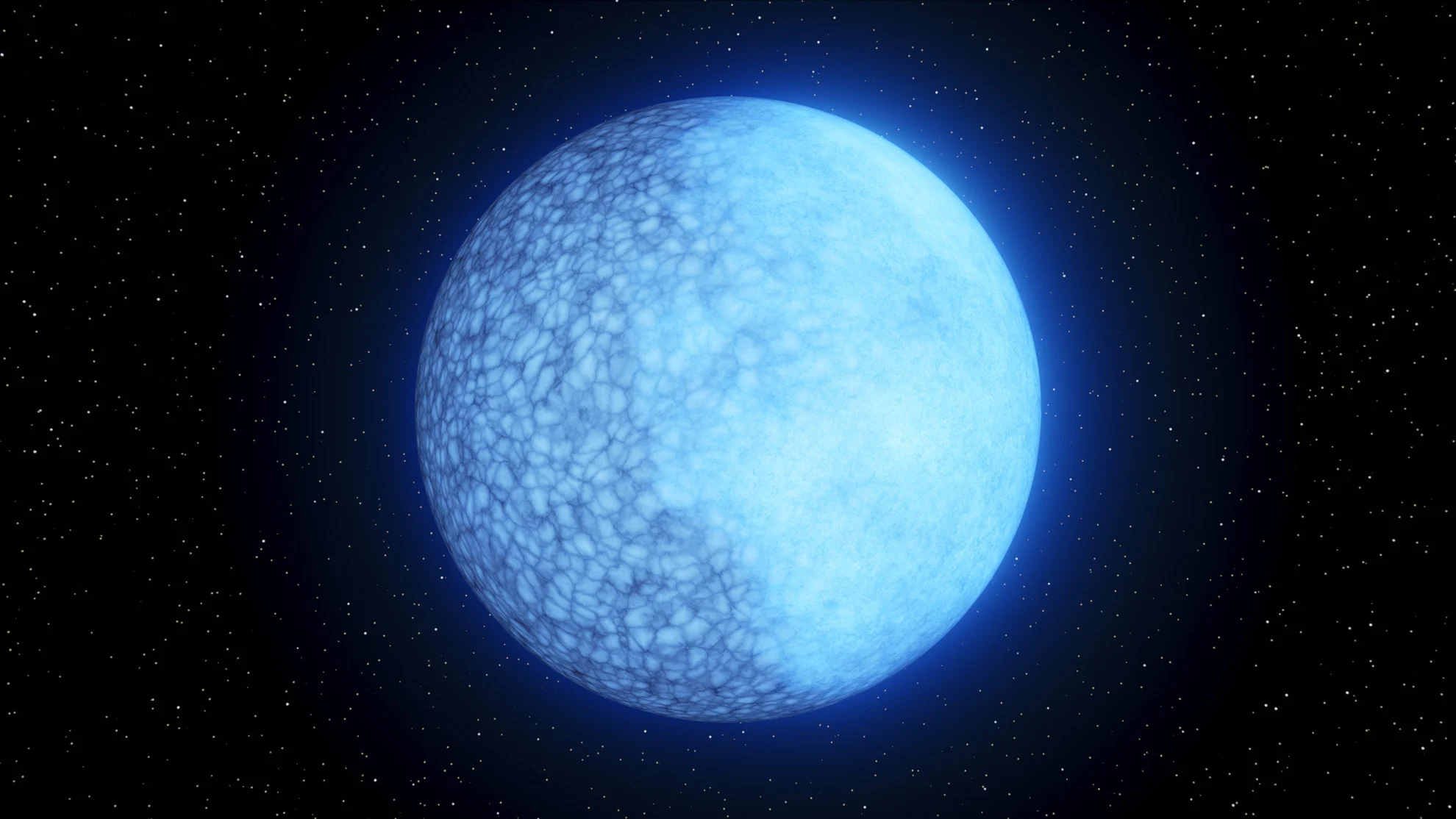
Meet Janus, the bizarre 'two-faced' white dwarf discovered by astronomers
The baffling nature of this dead star is a mystery to be solved.
An international team of astronomers just announced a bizarre discovery: a white dwarf star with two completely different faces. This is the first time such a stellar remnant has ever been found.
When our Sun reaches the end of its lifespan, around six billion years from now, it will cast off its outer layers, leaving only its dense, glowing core behind as a white dwarf. White dwarfs are roughly Earth-sized celestial objects made up of mostly hydrogen and helium. Although they result from the deaths of stars, they continue to glow brightly for billions of years, and astronomers can observe them in the cosmos.

This example of a white dwarf, HD 62166 (centre), lies at the heart of planetary nebula NGC 2440, located around 4,000 light years from Earth in the southern constellation Puppis. The image was captured by the Hubble Space Telescope and was released as part of the Hubble Heritage Collection in 1999. Credit: NASA/R. Ciardullo (PSU)/H. Bond (STScI)
Astronomers have found thousands of white dwarfs so far. Still, a team led by Caltech astrophysicist Dr. Ilaria Caiazzo recently discovered a very unusual one located around 1,300 light years away from Earth.
Nicknamed 'Janus' after the Roman god of duality, this white dwarf star shows two faces as it rotates — one side composed of hydrogen and the other comprised of helium. This is something that astronomers have never seen before.
"The surface of the white dwarf completely changes from one side to the other," Dr. Caiazzo said in a Caltech press release. "When I show the observations to people, they are blown away."

This artist's rendition shows the two faces of white dwarf Janus. Credit: K. Miller/Caltech/IPAC
This bizarre stellar remnant was found during a survey using the Zwicky Transient Facility (ZTF), an instrument at Caltech's Palomar Observatory. This particular white dwarf stood out because, unlike other white dwarf stars, this one dimmed and brightened every 15 minutes.
While this indicated that the white dwarf was rotating, there was no apparent reason why it would dim and brighten as it turned.
Pointing a second telescope at it, the W. M. Keck Observatory atop Mauna Kea in Hawai'i, Caiazzo and her team split the light from the dead star using a spectrometer. This revealed the chemical elements in the dead star's atmosphere, which shed some light on this mystery. When one side of the white dwarf rotated into view, Keck recorded the spectrum for only hydrogen, and when the other side turned to face us, only the spectrum for helium was detected.
"Imagine if you were looking at the Earth, it would be like seeing only the ocean. Then it turns, and there would be only land," study co-author Dr. Jeremy Heyl, a professor of physics and astronomy at the University of British Columbia, said in a UBC press release.
While the reason for Janus' duality is a baffling mystery, the researchers have some ideas about what may be causing its bizarre behaviour.
According to Caltech, "After white dwarfs are formed, their heavier elements sink to their cores and their lighter elements — hydrogen being the lightest of all — float to the top. But over time, as the white dwarfs cool, the materials are thought to mix together. In some cases, the hydrogen is mixed into the interior and diluted such that helium becomes more prevalent."
"This might be an answer to the puzzle, that one part of the star has transitioned its hydrogen to helium and the other half hasn't," Dr. Heyl explained. "It could be right on the edge of stability between one element and the other."
As for why the hydrogen and helium faces on Janus are so evenly split, that may have to do with the white dwarf's magnetic field.

White dwarf star Janus is depicted here in this artist's conception drawing, including the powerful magnetic fields that may be behind its strange appearance. Credit: K. Miller/Caltech/IPAC
Just as the Sun has a magnetic field, its white dwarf remnant will also have one. The survey that turned up Janus was explicitly looking for white dwarfs with powerful magnetic fields, though, and one way or another, this could be the key to explaining its dual nature.
"Magnetic fields around cosmic bodies tend to be asymmetric, or stronger on one side," Caiazzo said. "Magnetic fields can prevent the mixing of materials. So, if the magnetic field is stronger on one side, then that side would have less mixing and thus more hydrogen."
Another possibility involves how the magnetic field of the stellar remnant may affect the charged hydrogen and helium nuclei floating around in its atmosphere.
"The magnetic fields may lead to lower gas pressures in the atmosphere, and this may allow a hydrogen 'ocean' to form where the magnetic fields are strongest," Caltech theoretical astrophysicist Dr. James Fuller, who was a co-author on the study, explained in the press release.
"We don't know which of these theories are correct, but we can't think of any other way to explain the asymmetric sides without magnetic fields," Fuller added.











